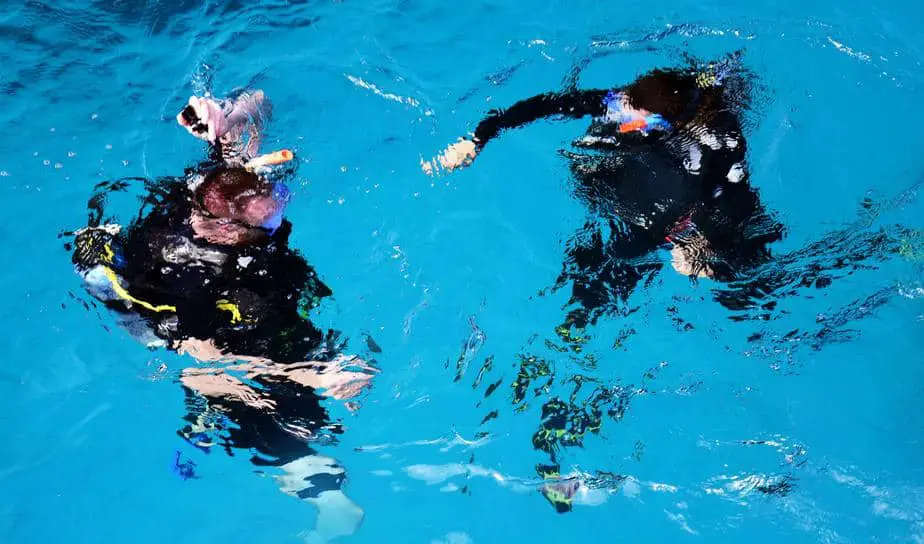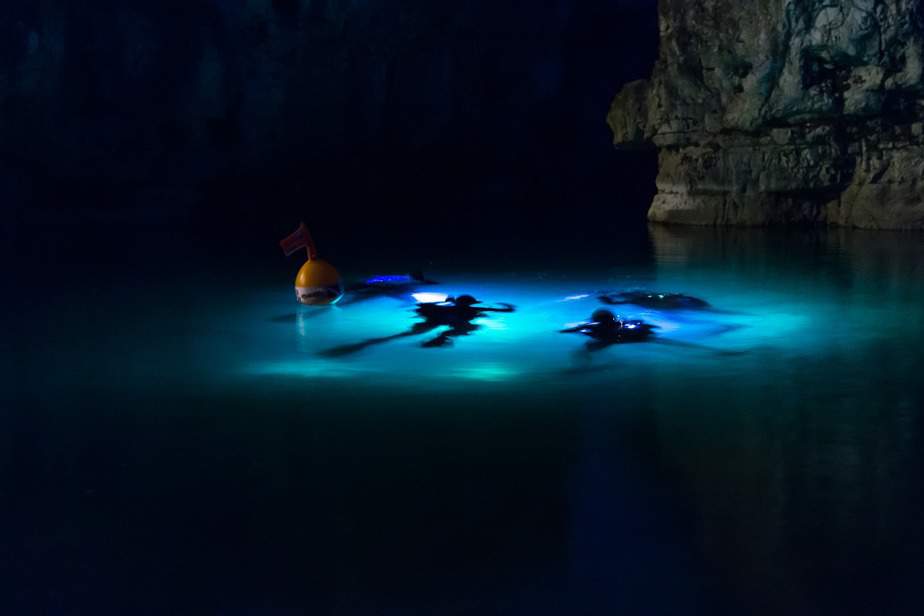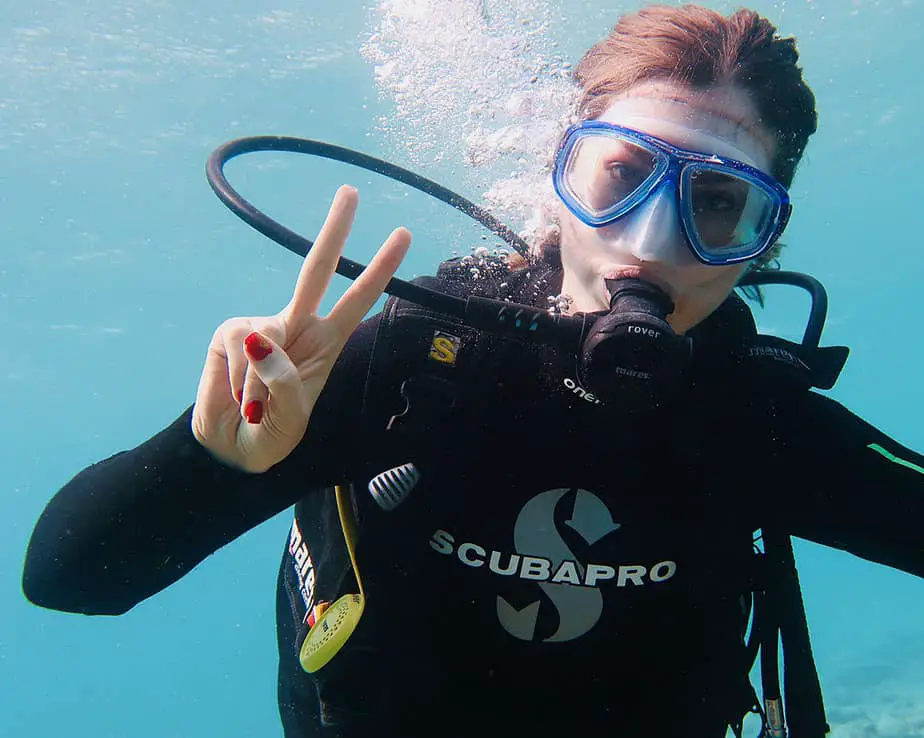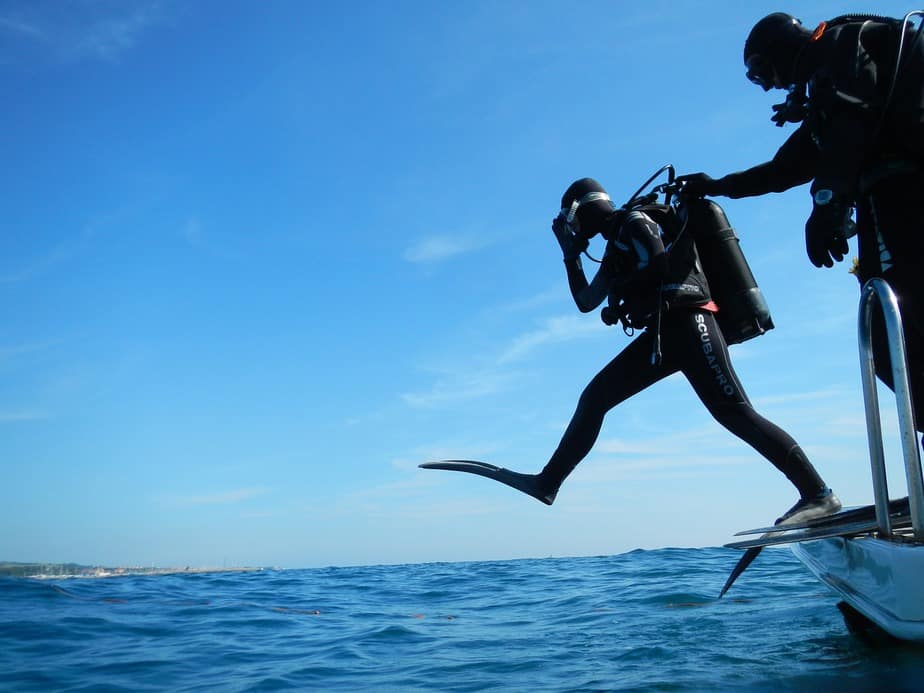Are you eager to move up the ranks to become a better diver? The Advanced Open Water Diver (AOW) course is the next milestone after finishing your Open Water Diver course. However, this may seem like an intimidating, perhaps impossible hurdle to jump over. Do you have what it takes to become an Advanced Open Water diver? In this article, we’ll shed some light on what to expect from this course and give you some tips to help you obtain your Advanced Open Water certification.
What’s expected of me?
In order to determine if you’re ready for this next milestone in your diving career, let’s first figure out what exactly is expected from each student in this course.
PADI explains that their AOW course is intended to give you more diving experience by teaching navigation, buoyancy, and compass skill as well as giving students a sample of different types of specialty dives. Specialty dives allow you to focus on the type of diving you prefer to do, kind of like choosing a major in university. You will be able to increase your depth limit from 18 m to 30 m once you’re advanced open water certified.
Reading the course description for the equivalent courses offered by other training agencies, it’s clear that the purpose of the AOW course from PADI and other agencies is to improve upon the basics (to advance them, if you will), and give you a taste of other types of diving.
This still seems a little vague, so here’s what’s truly expected of you for the PADI Advanced Open Water course. First, the minimum time commitment is at least two to three (2-3) days. During that time, you will complete five (5) PADI Adventure dives.
Adventure dives are the aforementioned specialty dives, of which there are many to choose from. Since Deep Dive and Underwater Navigation are two mandatory Adventure dives, you actually only have three Adventure dives to choose from. Some fun ones are Night Diving, Drift Diving, and Peak Performance Buoyancy. (Note: You will only be doing a “taster” dive of each of these specialty dives during the AOW course; you do not need to actually have completed the full-fledged course).
What to expect from the Advanced Open Water Diver course

You were introduced to the fundamentals of diving in your OW course. At a basic level, you learned about trim and buoyancy and basic navigation, among other skills. In the AOW course, you will be improving these core skills even further.
Before you get to diving, there is some new theory you need to learn, which should take you a few hours to go through. You will hone what you learned about dive physiology and physics, and gain greater understanding about topics like decompression sickness (the bends), gas planning, and inert gas narcosis. Once the knowledge portion is done, you will be asked to do five “taster” dives, which is basically a sampling of various specialty dives.
In the Peak Performance Buoyancy taster dive, for instance, you will hone your BCD and lung control skills to have complete mastery over your buoyancy. Of course, you’ll also learn new techniques and exercises which will help you take your trim and buoyancy control to the next level. If you take the full course later on, you will become a master at going up and down underwater.
One of the mandatory dives is underwater navigation. In this dive, you’ll learn about visual navigation and numerous distance gauging techniques. You’ll also expand on the compass skills you already know. Thanks to the mandatory deep dive component, you will increase your maximum depth from 18 m to 30 m (60 ft to 100 ft). Now, new dive sites are accessible to you that you couldn’t reach before.
By sampling these taster dives, you will be introduced to new dangers and risks, but also broaden your horizons and open the way for new diving adventures. While there are many adventure dives, depending on the season and the location of the dive center, you may be limited in what you can do. For instance, you couldn’t do ice diving in the middle of summer in Florida.
Furthermore, some dive centers teach the same suite of dives for all students, others have more options and allow the students to choose which ones they are interested in. Once again, what’s offered depends on the geography and logistics, so don’t get angry at the dive center if they don’t offer what you want.
When should I begin?

You might be wondering how many dives you need in order to enroll in the AOW course. Would you be relieved if I told you the answer is a big, fat, ZERO?
In all the major scuba training agencies, technically the only prerequisite to enroll in the AOW course is to be an Open Water (OW) diver. Theoretically, you can just sign up for the AOW as soon as you finish the OW course without doing a single dive. The question is, should you? This is where the debate begins.
Many experienced divers and scuba instructors recommend gaining sufficient experience before signing up for the AOW course. How much is “sufficient”? Some say 10 to 20, others say 50 to 100. And again, some say you should just sign up right away. Essentially, the argument is: do you need diving experience or not? There are merits to both arguments.
Let’s dive into the argument for doing X number of dives before enrolling. Obviously, having greater experience will make the course a lot easier. Thanks to your field experience, you can hopefully grasp any new concepts quickly and perform them at a high level. Your core skills will be solidified by then, so building upon these skills will feel like a natural progression.
Since you have a mastery of the basics, you can then dedicate more focus to learning the new skills for the specialty dives. You’ll also be able to see the value of these adventure dives in a wider context, since you have your own diving experiences to draw from. Overall, you’re making the AOW course much easier on yourself and your instructor.
On the other hand, what is the argument for taking the AOW course quickly after passing the OW course? Let’s say you have performed anywhere from 0 to 10 dives. Your skill level and breadth of experience will obviously be much less. The learning curve will be much steeper, and you may feel overwhelmed by the deluge of new information when you’ve barely processed the old ones.
However, being put through the ringer is not necessarily a bad thing. Some individuals excel under pressure. Stress can kick your butt into gear and force you to do some accelerated learning. You need to have immense mental and physical fortitude to undergo such a strenuous feat. A wide-eyed newbie may get more out of the course than an experienced diver, who may already be set in their ways.

Furthermore, by taking the advanced course so soon after the entry-level course, you will be building upon and refining skills that are still fresh in your mind. You have not had a chance to develop bad habits, and you are reinforcing your old knowledge right away. It’s harder to unlearn a bad habit than it is to learn a new one. For instance, it’s hard to break the habit of not using your hands for buoyancy control if you’ve been doing it the whole time.
Additionally, many experienced divers who waited too long before enrolling in the AOW course may feel reluctant to do so, because they don’t think they are going to learn anything new. To some degree, they are correct. If they already know how to do the skills that the course is designed to teach you (perhaps they picked it up from other experienced divers), then the course is not really teaching them anything new.
Unfortunately, even if you know the skills, without the proper certification there are some things you are simply not allowed to do (e.g. insurance won’t pay out if you dive past the recommended limits of your OW certification, or certain dive sites are only accessible if you’re an advanced diver, etc).
At this point, these divers should be focusing on taking some specialty dive courses. Overall, it’s better if you take the AOW course sooner rather than later. The AOW course is not some super advanced course that most people fail. With how low the prerequisites are, know that it merely consolidates the basics and introduces you to the various specialty dives that are available.
A note on semantics
If you add the word “advanced” into the title of any course, it can make the course seem very intimidating. Try it out. Instead of “Mathematics”, doesn’t “Advanced Mathematics” sound much harder? Or how about “Advanced Physics”, “Advanced Organic Chemistry”, or “Advanced Open Water Diver”? What exactly is an “advanced” diver?
Most people’s assumption of what “advanced” means is that it has or requires a high skill level. However, keep in mind what the full course title is: Advanced Open Water. If you remember, the OW course is the entry-level, basic diving course that all divers need to take. It wasn’t particularly difficult.
The advanced version just literally means an advancement on what you learned. In other words, it’s a bit harder than the OW course, but that doesn’t mean it’s necessarily hard unless you really struggled with the first course. You’re just building on what you learned previously.
As we mentioned, there is no minimum number of dives. You could literally enroll in the AOW as soon as you finish the OW. If you truly want to learn advanced diving, then pass the AOW course first and start taking the specialty dive courses like Wreck Diving or Cave Diving. Those courses are truly “advanced.”
Why should I become Advanced Open Water certified?

One of the most common reasons for a diver to want to pursue this higher certification is that they can increase their diving depth from 18 m to 30 m. This allows divers to dive to new sites they otherwise wouldn’t be prepared (or insured) for. Some dive sites or liveaboards specifically require you to have the Advanced Open Water Diver certification to be able to enjoy to the fullest.
During the AOW course, you will be introduced to specialty dives for the first time. For some, this is a chance to discover a new lifelong passion such as wreck diving, night diving, shore diving, or drift diving. Having some experience of these specialty dives makes you a more well-rounded and skilled diver.
Don’t underestimate how important it is to learn and improve on the fundamentals. Having better buoyancy control helps with your positioning which you will be doing on every single dive. It also gives you confidence to avoid unwanted contact with the reef or dangerous marine life. Even as a recreational diver, there are lots of benefits to be gained by taking the AOW course.
Lastly, it just feels nice to say that you’re an advanced diver. It’s also a prerequisite if one day you hope to become a Master Diver, Divemaster, or even an instructor.
How much does the Advanced Open Water Diver course cost?
Isn’t this the million dollar question? It’s hard for us to give an exact price due to various factors. The best we can give is a range, which is around $400 to $650 USD.
The total cost depends on the kind of specialty dives you want to do, how many dives (the minimum is 5 for each taster dive), logistics, and the dive center you’ve booked with. For example, if you’ve booked it in Venice, Italy, then you’re likely to pay more than booking it someplace in the States or in Southeast Asia.
Additionally, fuel isn’t cheap and boats eat a lot of it. Also how much gear are you renting, and what kind of gas mix are you using? Aside from rentals, some gear you must buy outright, such as your own mask, boots, gloves, dive knife, and snorkel, though you should already have them from taking your Open Water course.
You can shop around for prices. Just because a dive center is nearby doesn’t mean you have to book with them. Even if a dive center is more expensive, if the quality of the instructor is high then you are getting your money’s worth. If you are cutting costs at the expense of your diving education, you have to ask yourself if it’s worth it. You can also do the dives abroad if you want to give yourself the greatest amount of options, such as more idyllic dive locations, access to different taster dives, or a lower price.
Parting words
At the end of the day, the decision of when to start the AOW course is yours to make. Depending on your comfort level, goals, and confidence, you may enroll right away or wait until you have some more dives under your belt. For some divers, some time to apply what they just learned in the OW course is necessary to commit it into memory.
Others feel that taking the AOW soon after will help consolidate what they have recently learned and to continue down the right path before they have time to develop any bad habits. Extending their skill base early on will reduce the likelihood of relearning what they already know if they were to wait too long.
As a general rule, a diver should have a basic level of competency before enrolling. If the instructor needs to hold your hand every step of the way, you’re probably not going to pass. For some, the teachings are absorbed right away. Others find it hard to even get scuba certified in the first place. If you are in the latter category, you might want to get more experience first.
As a litmus test of sorts, you should be able to build and dismantle your own equipment without external help. You should also be willing and capable of working well with a buddy and performing buddy checks. You must also be competent at underwater communication, such as using underwater hand signals.
With these basic skills present, you will benefit greatly when you take your AOW course regardless of the amount of dives you have (or don’t)!
You may also be interested in reading our article on when you should enroll in a technical diving course.


